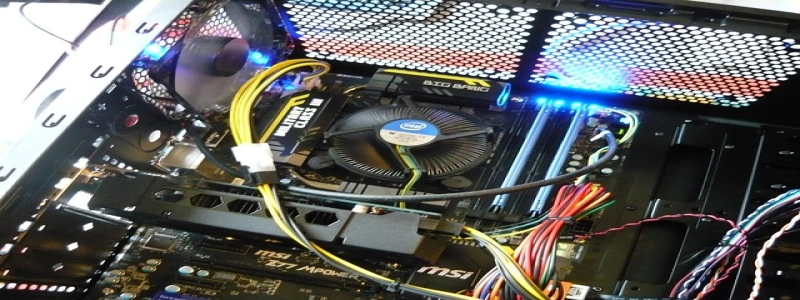[Fiber Optic Cable – Single Mode]
I. Introduction
A. What is Fiber Optic Cable?
B. Importance of Fiber Optic Cable in Telecommunications
II. Types of Fiber Optic Cable
A. Single Mode Fiber Optic Cable
1. Definition and Characteristics
2. Core Size and Cladding Diameter
3. Light Propagation Mechanism
III. Advantages of Single Mode Fiber Optic Cable
A. Longer Transmission Distance
B. Higher Bandwidth Capacity
C. Better Signal Quality
D. Immune to Electromagnetic Interference
IV. Applications of Single Mode Fiber Optic Cable
A. Long-Distance Telecommunications
B. Internet Backbone Infrastructure
C. Cable Television Networks
D. Data Centers
V. Installation and Maintenance of Single Mode Fiber Optic Cable
A. Preparation of Fiber Optic Cable
B. Splicing and Termination Techniques
C. Testing and Troubleshooting
VI. Future Developments in Single Mode Fiber Optic Cable
A. Continued Increase in Bandwidth Capacity
B. Advancements in Manufacturing Techniques
C. Integration with 5G and Internet of Things (IoT)
VII. Conclusion
A. Summary of Single Mode Fiber Optic Cable
B. Key Role in Advancing Telecommunications Technology
I. Introduction
Fiber optic cable has revolutionized long-distance telecommunications by enabling the transmission of data, voice, and video signals at high speeds and over vast distances. It consists of a thin, flexible strand of glass or plastic that uses light to carry information. Among the various types of fiber optic cable, single mode fiber optic cable stands out for its unique features and numerous advantages.
II. Types of Fiber Optic Cable
A. Single Mode Fiber Optic Cable
Single mode fiber optic cable is designed to carry a single ray of light, allowing for long-distance transmission with minimal signal loss or distortion. It has a small core size and a cladding diameter that ensures the light travels in a straight path, resulting in significantly reduced signal dispersion.
III. Advantages of Single Mode Fiber Optic Cable
A. Longer Transmission Distance
Due to its small core size and reduced signal dispersion, single mode cable can transmit signals over much greater distances compared to other types of fiber optic cables. This makes it ideal for long-haul telecommunications applications.
B. Higher Bandwidth Capacity
Single mode fiber optic cable supports higher bandwidth capacity, allowing for the transmission of larger volumes of data at faster speeds. This capability is crucial in the age of high-definition video streaming, cloud computing, and other data-intensive applications.
C. Better Signal Quality
The single mode cable’s ability to transmit a single ray of light ensures that the signal remains intact and maintains its quality throughout the transmission. It minimizes signal loss, making it ideal for applications that require high signal integrity.
D. Immune to Electromagnetic Interference
Unlike traditional copper cables, single mode fiber optic cable is not affected by electromagnetic interference. This characteristic makes it highly reliable and resistant to disruptions caused by nearby power lines, radio frequencies, or other electronic devices.
IV. Applications of Single Mode Fiber Optic Cable
A. Long-Distance Telecommunications
Single mode fiber optic cable is extensively used in long-distance telecommunications networks, such as undersea cables and fiber backbone networks that connect cities and countries. Its ability to transmit signals over vast distances with minimal loss makes it indispensable for global connectivity.
B. Internet Backbone Infrastructure
The backbone of the internet relies heavily on single mode fiber optic cable to handle the enormous data traffic between data centers, internet service providers, and content delivery networks. It supports the high-speed, low-latency connectivity required for seamless internet browsing and streaming.
C. Cable Television Networks
Single mode fiber optic cable is also utilized in cable television networks to deliver high-definition video signals to homes. Its superior bandwidth capacity enables the transmission of multiple channels and ensures a high-quality viewing experience for subscribers.
D. Data Centers
In data centers, where massive amounts of data are processed and stored, single mode fiber optic cable provides the high-speed, reliable connectivity required for efficient data transfer. It forms the backbone of the data center network infrastructure, facilitating seamless access to cloud services and optimizing the performance of applications.
V. Installation and Maintenance of Single Mode Fiber Optic Cable
A. Preparation of Fiber Optic Cable
Before installation, the fiber optic cable needs to be properly prepared, including stripping the protective coatings, cleaning the fiber ends, and ensuring accurate alignment.
B. Splicing and Termination Techniques
Splicing involves joining two fiber optic cables to create a continuous connection, while termination involves connecting the cable to various devices or equipment. Both techniques require precision and expertise to ensure low signal loss and maintain signal integrity.
C. Testing and Troubleshooting
After installation, the single mode fiber optic cable undergoes rigorous testing to verify its performance and identify any potential issues. Specialized equipment is used to measure signal strength, loss, and dispersion, enabling technicians to troubleshoot and rectify any problems.
VI. Future Developments in Single Mode Fiber Optic Cable
A. Continued Increase in Bandwidth Capacity
As data demands continue to rise, single mode fiber optic cable will see an ongoing increase in its bandwidth capacity. Advancements in fiber manufacturing and optical components will push the limits of data transmission speeds even further.
B. Advancements in Manufacturing Techniques
Improved manufacturing techniques, such as the use of better materials and more precise manufacturing processes, will lead to cost-effective production of single mode fiber optic cable. This will make it more accessible for a wider range of applications and drive further deployment.
C. Integration with 5G and Internet of Things (IoT)
With the advent of 5G networks and the growing Internet of Things (IoT) ecosystem, single mode fiber optic cable will play a crucial role in providing the necessary high-speed, low-latency, and reliable connectivity. Its ability to support the massive data traffic generated by IoT devices and ensure seamless communication will be in high demand.
VII. Conclusion
Single mode fiber optic cable is a vital component of modern telecommunications infrastructure. Its unique characteristics, such as longer transmission distance, higher bandwidth capacity, and immunity to electromagnetic interference, make it the preferred choice for global connectivity, internet backbone infrastructure, cable television networks, and data centers. As advancements in technology continue to drive the demand for faster and more reliable connectivity, single mode fiber optic cable will continue to play a key role in advancing telecommunications technology.







